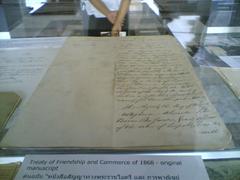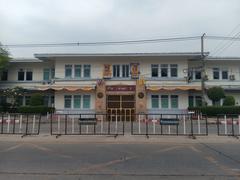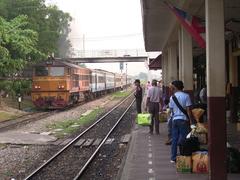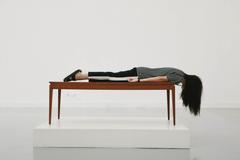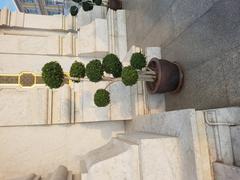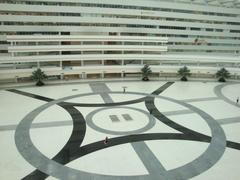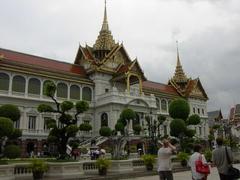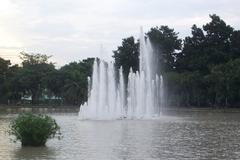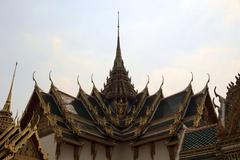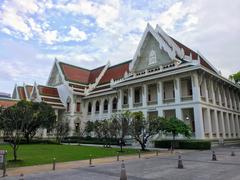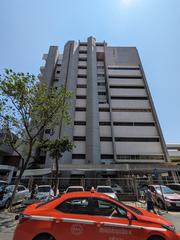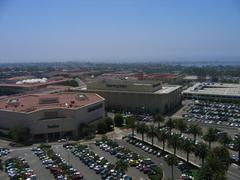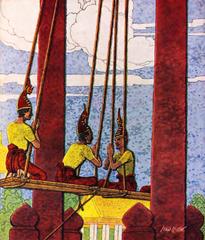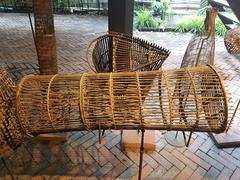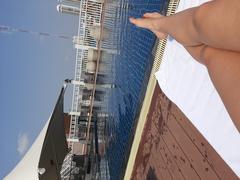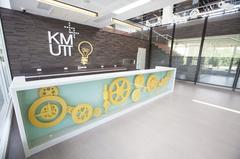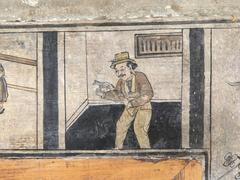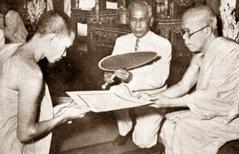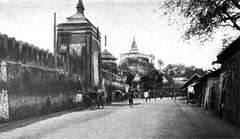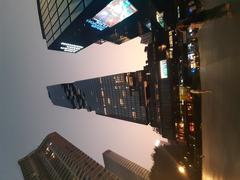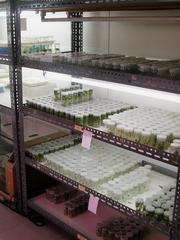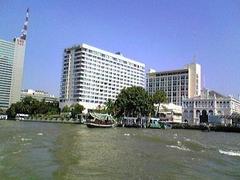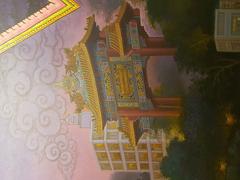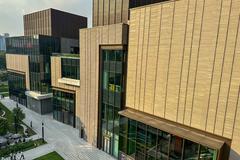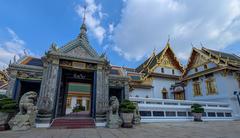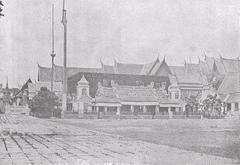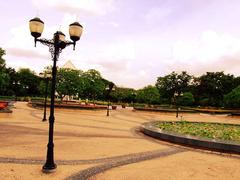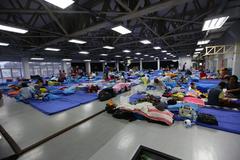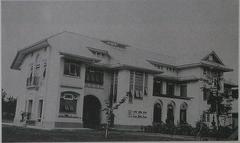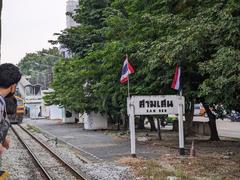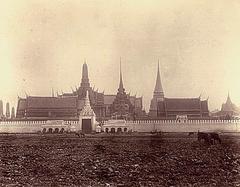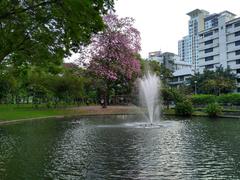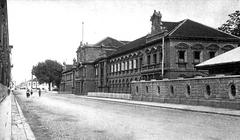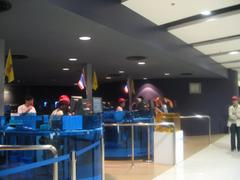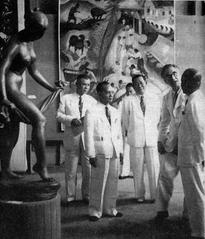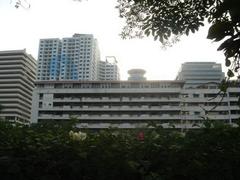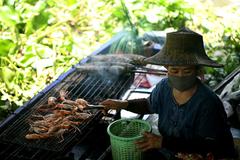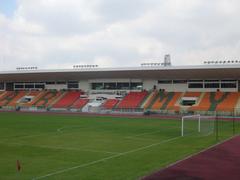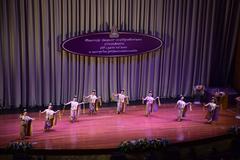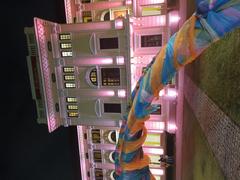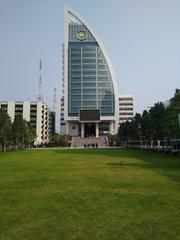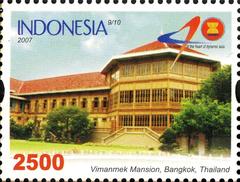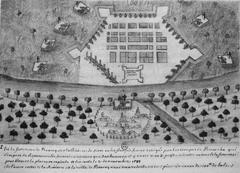Wat Ratchapradit Visiting Hours, Tickets, and Travel Guide in Bangkok
Date: 14/06/2025
Introduction
Wat Ratchapradit Sathit Maha Simaram Ratchaworawihan, commonly known as Wat Ratchapradit, is a distinguished royal temple nestled in historic Bangkok. Established in 1864 by King Rama IV (King Mongkut), the temple is not only a masterpiece of 19th-century architecture but also a symbol of Thailand’s religious reform and royal heritage. As the first Dhammayuttika Nikaya temple in the capital, Wat Ratchapradit played a pivotal role in modernizing Thai Buddhism and remains a tranquil, culturally rich destination within Bangkok’s Rattanakosin district.
Located close to major landmarks such as the Grand Palace and Wat Pho, Wat Ratchapradit offers free entry and convenient visiting hours, making it an accessible highlight for travelers interested in history, architecture, and spirituality. This guide presents the temple’s origins, architectural features, cultural significance, and essential visitor information, ensuring a rewarding experience for all.
Table of Contents
- Introduction
- Royal Origins and Historical Significance
- Architectural Features and Artistic Highlights
- Religious and Royal Ceremonies
- Murals and Cultural Narratives
- Visiting Information and Practical Tips
- Accessibility and Getting There
- Etiquette and Visitor Experience
- Nearby Attractions
- Frequently Asked Questions (FAQ)
- Summary and Visitor Recommendations
- Sources and Further Information
Royal Origins and Historical Significance
Wat Ratchapradit was commissioned by King Rama IV, who sought to complete the symbolic triad of principal temples in Bangkok—mirroring the ancient Ayutthaya capital’s spiritual landscape. The site, previously a coffee plantation under King Rama III, was transformed by King Rama IV into a center for religious reform and royal ritual (Wikipedia).
This temple was established as the first center of the Dhammayuttika Nikaya (Thammayut) sect in Bangkok, reflecting King Rama IV’s dedication to stricter monastic discipline and a return to the Pali Canon. The temple’s founding also completed the trio of royal temples—Wat Mahathat, Wat Ratchaburana, and Wat Ratchapradit—strengthening the monarchy’s spiritual authority in the capital (Wikipedia; Chiangdao Travel Guide).
King Rama IV’s personal involvement in the temple’s construction, including the innovative use of empty garlic jars as the ubosot’s foundation to stabilize the soft ground, adds a distinctive historical anecdote to its story (Wikipedia).
Architectural Features and Artistic Highlights
Despite its modest size—covering about 3,200 square meters—Wat Ratchapradit captivates visitors with a harmonious blend of Thai, Khmer, and subtle Western architectural influences (Say Hi Thailand). Key features include:
- Main Ordination Hall (Ubosot/Phra Viharn Luang): Elevated on a marble-tiled base with distinctive grey and white checkerboard patterns. The pediment displays King Mongkut’s royal crown emblem set in blue glass, symbolizing royal patronage (Bangkok for Visitors).
- Khmer-Style Prang and Chedi: Flanking towers with faces inspired by Angkor Thom, representing Mount Meru in Buddhist cosmology.
- Doors and Windows: Crafted from gilded teak, adorned with mother-of-pearl inlays and crowned with royal motifs.
- Stonework and Stucco: Intricate designs featuring Buddhist iconography, flora, and fauna, highlighting the harmony between nature and spirituality.
- Auxiliary Structures: Pavilions and shaded walkways designed for meditation and community gatherings.
The compact layout, innovative foundation, and detailed stonework set Wat Ratchapradit apart from other royal temples in Bangkok.
Religious and Royal Ceremonies
Wat Ratchapradit serves as an active center for both religious and royal ceremonies. Its proximity to the Grand Palace made it a preferred venue for significant state and monastic events. The temple was elevated to a first-class royal monastery in 1915 and continues to host important Buddhist festivals, including merit-making rituals during Songkran and the unique “Twelve Month Royal Ceremonies” depicted in its murals (Wikipedia; Chiangdao Travel Guide).
Murals and Cultural Narratives
The temple’s interior is particularly renowned for its murals:
- Twelve Month Royal Ceremonies: These murals provide a visual record of the Siamese royal calendar and court life, reflecting the deep connection between monarchy and Buddhist rituals (Thaicyclopedia).
- Astronomical Themes: Scenes depicting the solar eclipse allude to King Rama IV’s scientific pursuits and the blending of tradition with modern knowledge.
- Cross-Cultural Art: Window paintings by Japanese artists highlight the cosmopolitan spirit of King Rama IV’s reign (Trip.com).
The artistic program extends to the temple’s ceilings, where gold stars and rosettes on a deep red background symbolize spiritual aspiration and the heavens.
Visiting Information and Practical Tips
- Opening Hours: Wat Ratchapradit is open daily, typically from 8:00 a.m. to 6:00 p.m. (hours may vary slightly, with some sources noting 8:00 a.m. to 5:00 p.m. or 9:00 a.m. to 4:30 p.m.—arrive early to ensure access).
- Entrance Fee: Admission is free; donations for maintenance are welcome (Say Hi Thailand).
- Dress Code: Modest attire is required—shoulders and knees must be covered. Remove shoes before entering sacred areas.
- Photography: Generally permitted on temple grounds. Always check for signage or ask staff before photographing in sacred spaces or during ceremonies.
Best Times to Visit: Early mornings or late afternoons are ideal for avoiding the heat and crowds, especially during Bangkok’s hot and rainy season in June.
Duration: Allocate 30–60 minutes for your visit, depending on your interest in art and history.
Accessibility and Getting There
Wat Ratchapradit is situated in the Phra Nakhon district at 2 Saranrom Road. It is within walking distance of the Grand Palace and Wat Pho, making it an easy addition to a day of historical exploration.
- Public Transport: The nearest MRT station is Sanam Chai, about a 10–15 minute walk. Taxis and tuk-tuks are also convenient.
- For Visitors with Mobility Challenges: The temple grounds are mostly flat, but some areas have steps and uneven surfaces. There are no dedicated facilities for wheelchair users; assistance may be required (Say Hi Thailand).
For navigation, use Google Maps.
Etiquette and Visitor Experience
- Maintain a respectful demeanor and keep voices low, especially during ceremonies.
- Do not touch murals or religious artifacts.
- Follow staff guidance regarding photography.
- Wear easily removable shoes and bring water, as refreshments on-site are limited.
- During the rainy season, carry an umbrella or raincoat for sudden showers.
Nearby Attractions
Enhance your cultural itinerary by visiting these nearby sites:
- Grand Palace: The ceremonial heart of Thai royalty.
- Wat Pho: Home to the Reclining Buddha.
- Saranrom Park: A tranquil green space adjacent to the temple.
- Wat Mahathat: Another major royal temple in the district.
Frequently Asked Questions (FAQ)
Q: What are the visiting hours for Wat Ratchapradit?
A: Open daily, typically from 8:00 a.m. to 6:00 p.m.
Q: Is there an entrance fee?
A: No, entry is free.
Q: How do I get there?
A: Take the MRT to Sanam Chai station, then walk 10–15 minutes; taxis and tuk-tuks are also convenient.
Q: Are guided tours available?
A: Yes, arrange through local tour operators for enhanced insight.
Q: Is the temple wheelchair accessible?
A: The grounds are mostly flat but include some steps; accessibility is limited.
Q: What should I wear?
A: Modest clothing covering shoulders and knees; remove shoes before entering main halls.
Summary and Visitor Recommendations
Wat Ratchapradit stands out as an essential Bangkok historical site, offering a tranquil atmosphere steeped in royal and religious tradition. Its innovative architecture, artistic murals, and active role in Buddhist ceremonies make it a rewarding destination for cultural travelers. Take advantage of its free admission, convenient location, and proximity to other attractions to enrich your exploration of Thailand’s heritage.
For a deeper experience, consider joining a guided tour and use the Audiala app for digital maps, guided tours, and event updates.
Sources and Further Information
- Wat Ratchapradit – Wikipedia
- Chiangdao Travel Guide: Wat Ratchapradit
- Say Hi Thailand – Wat Ratchapradit Sathit Maha Simaram Ratchaworawihan
- Bangkok for Visitors – Wat Ratchapradit
- Trip.com – Wat Ratchapradit Sathit Maha Simaram
- Thaicyclopedia – Sacred Symbols in Thai Temple Murals
- Google Maps – Wat Ratchapradit Location
